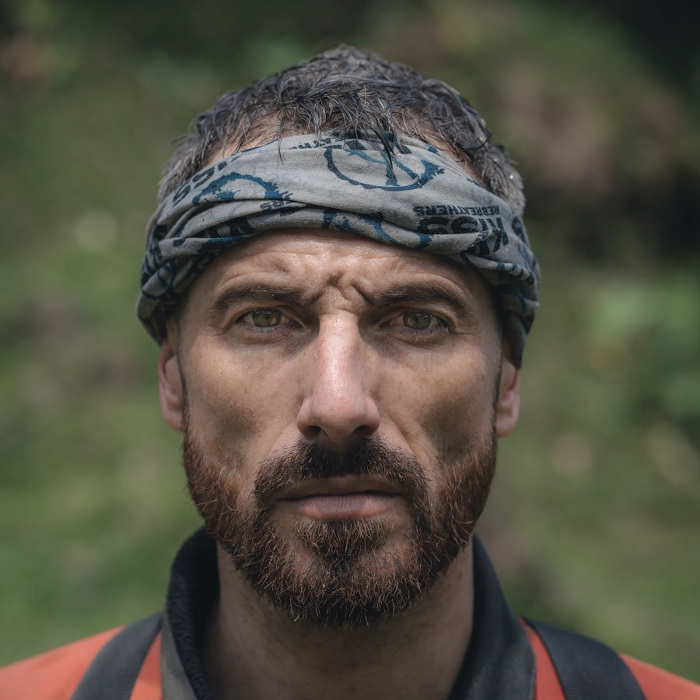

Two years after the incredible success of the previous expedition as part of the Mahafaly Karst Exploration Project (MKEP) in 2014, the team returned to Madagascar with a five-person team of experienced explorers to continue further exploration of ongoing projects in the Aven and Malazamanga sinkholes, and as it turned out, to open another huge gateway to the underwater wonders of Madagascar.
In collaboration with an expanded team of scientists and paleontologists from Central Michigan University, University of Massachusetts Amherst, and University of Antananarivo, the team began further underwater documentation of findings and sampling of the massive fossil cluster discovered in the sinkhole in 2013.
In a very short time, Phillip Lehman, Ryan Dart, and Zachary Klukkert collected three boxes of samples, which enabled scientists to discover fossils of the extinct Voay crocodile, extinct species of lemurs, and the legendary 12-meter Mamutaka – a huge, three-meter Malagasy ostrich known as the “elephant bird”.
According to scientists, the terrain configuration and location of the Aven sinkhole created ideal conditions for fossil formation – not only did the place attract hordes of animals, but it also helped create fossils, partly due to the specific composition of the water. This has created an amazing window into the past, providing a wealth of data on the biology of Madagascar's extinct endemic species.
During previous expeditions, the team reached the limit of what was possible to discover using open circuit. Therefore, this time the focus was on further exploration using CCR rebreathers, which allowed for deeper and longer diving while shortening decompression time.
The unimaginable scale of the cave is a challenge, and despite using video lights with over 30,000 lumens, it was not possible to fully illuminate its chambers. Just reaching the end of the previously installed guide line took a considerable amount of time and greatly complicated further exploration. The lack of clear trends in cave orientation made it difficult to decide on directions for further exploration. New parts of the cave could start in any of the many small corridors in the ceiling, walls, or floor of this enormous space.
Initial dives were very promising and the team installed several hundred meters of guide line in new sections, but increasingly, divers returned with full reels, tired and full of doubts. Despite these frustrations, Hans Kaspersetz and Patrick Widmann expanded the discovered part of the cave from the existing 2.7 km to over 4.5 km, diving to a maximum depth of 50 meters.
By the end of the expedition, Malazamanga was the largest submerged cave in Africa and, in the opinion of the team, one of the most beautiful in the world.
Sometimes the greatest discoveries don't require traversing many kilometers in the jungle. During exploratory dives in the Andakatomivola cave, discovered by the team in 2014 and made accessible by chief Fahazoa, the team members heard rumors of a large sinkhole called La Piscine (swimming pool). Phillip Lehman and Ryan Dart found a local guide, who after a short truck ride and an easy hike, led them to a large opening at the base of a baobab tree.
Members of the local Mikea tribe, for whom the place is sacred, allowed Phillip to dive with a snorkel after explaining his purpose. To everyone's excitement, it turns out the cave is large and has great potential for exploration.
Ryan and Phillip returned the next day to verify and assess the new discovery. Underwater, they saw a very unusually shaped cave, where erosion was caused by multidirectional flow. This created many sharp angles and colors reminiscent of the saltwater sections of Mexico's Cenote Regina.
The team quickly used up all the available guide line, and due to the lack of possibility to purchase more, as well as the expedition coming to an end, the decision was made to suspend exploration and return to Anjanamba later the same year.
The sheer size of the passages here is beyond any explanation, and exploring this cave has been most definitely among the biggest dive-related challenges of my life.
Patrick Widmann, CCR Cave Instructor Evaluator, Cave Explorer
05.2016
It's your contribution!
By choosing the brands involved in our program for your personal diving, you directly contribute to the support we can provide to ESP divers around the world. Every little bit counts towards reaching our goals.
Thank you!
How to apply?
Share your vision with us. We want to support adventures, explorations, and projects that deepen the understanding of the underwater world.








